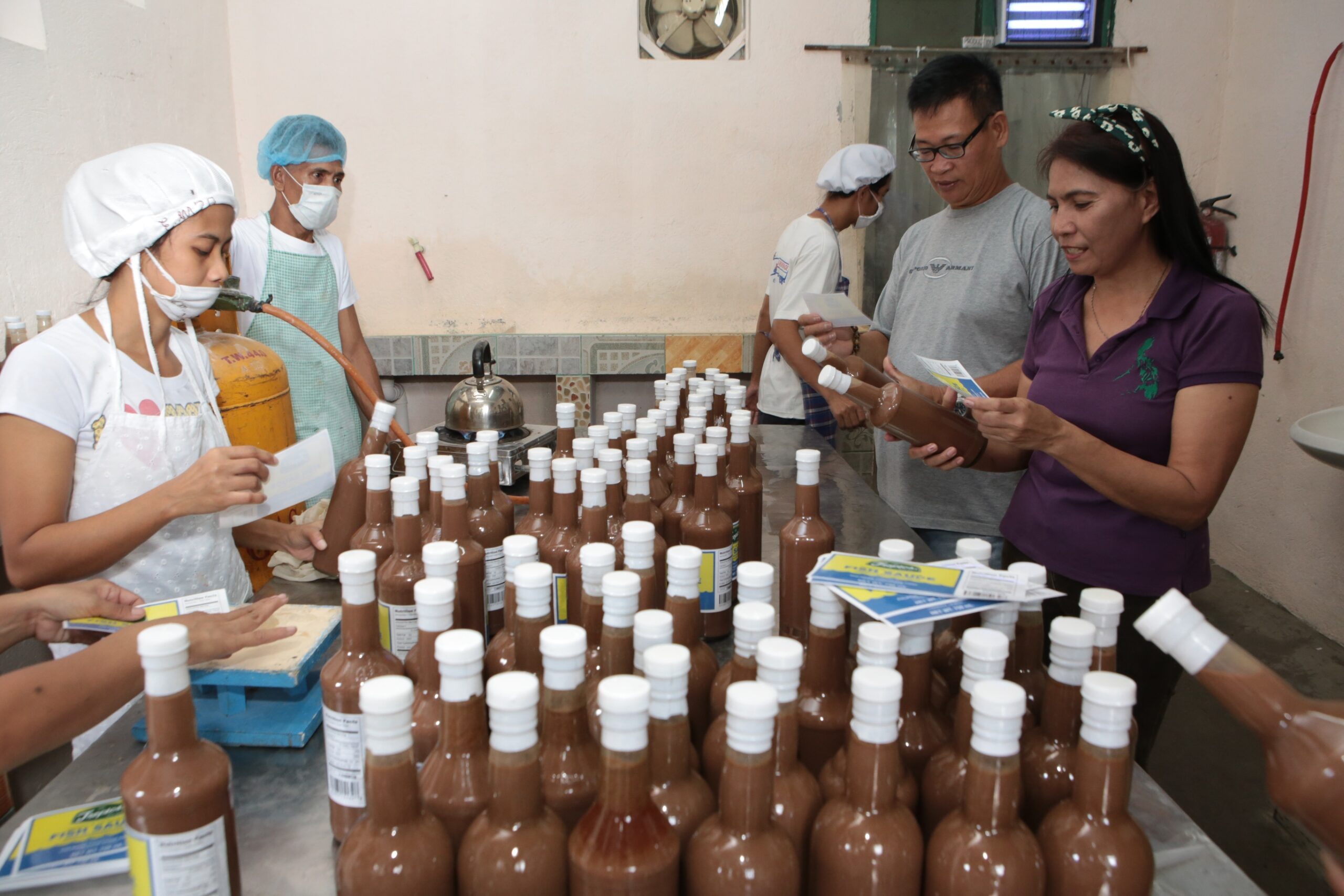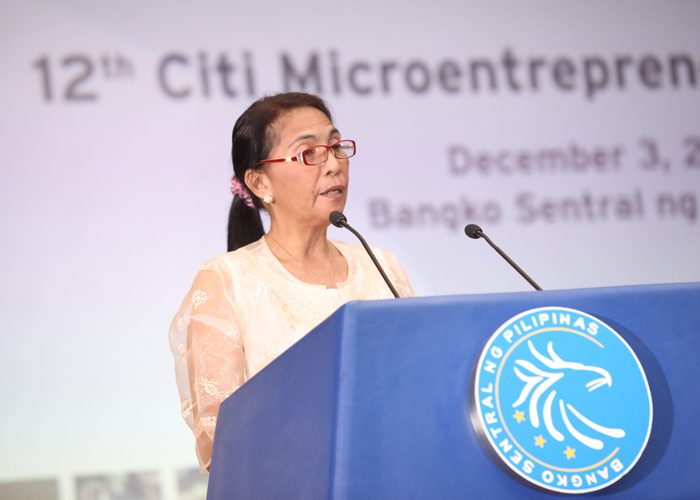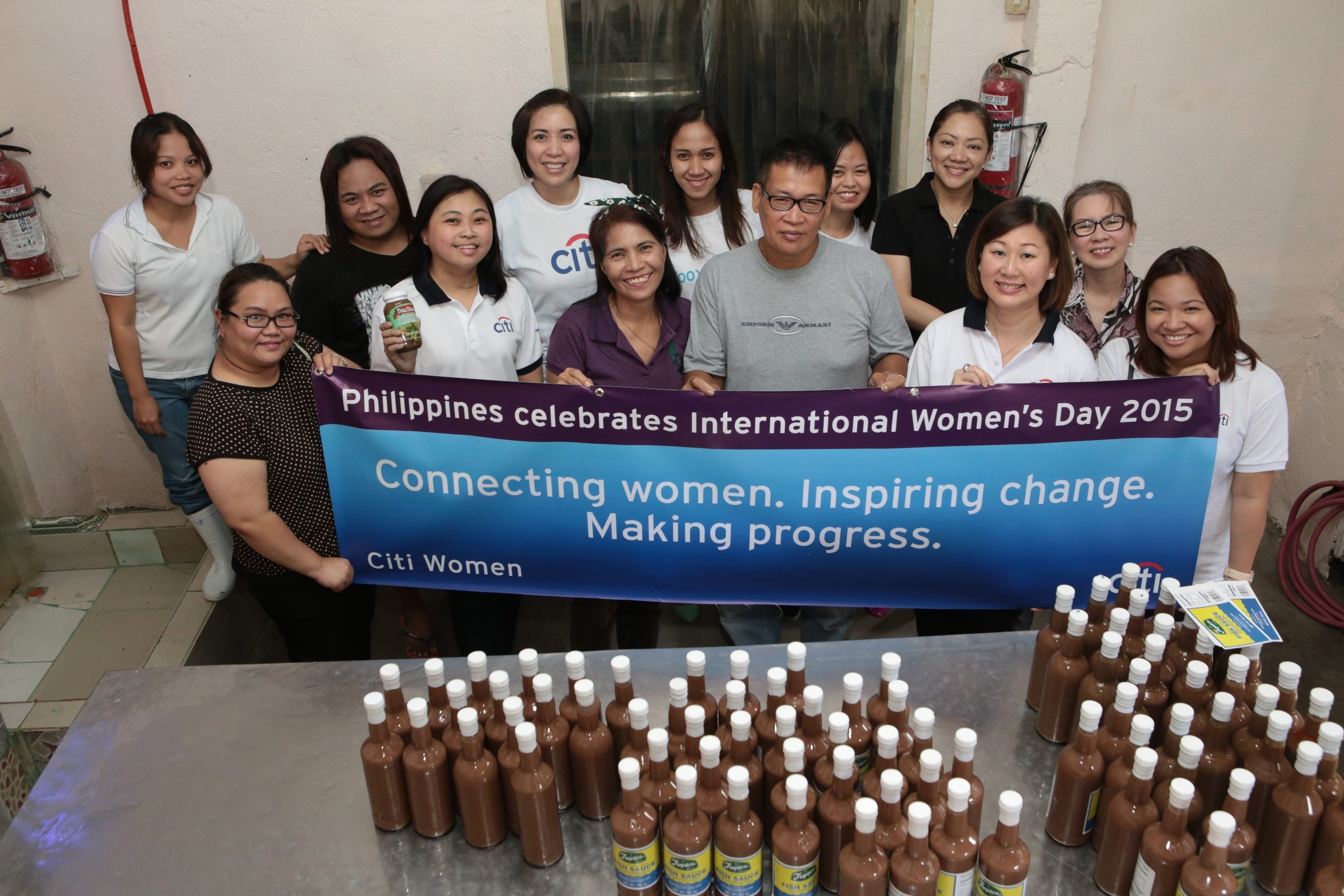SUMMARY
This is AI generated summarization, which may have errors. For context, always refer to the full article.

Teresita Valdez was just 13 years old in 1973 when she started working and removing fish heads for a factory of sautéed shrimp paste, known to Filipinos as bagoong.
With a desire to be her own boss and give her family a better future, Valdez and her husband in 1993 opened their own bagoong factory, and now intend to add “a few branches” once they get enough funds.
On average, she said, every month yields about P50,000 ($1,103.87) in revenue.
Valdez, fondly called by her family and friends as Nanay Tess, recalled how she started and failed as a microentrepreneur.
“Hindi siya madali. Suntok sa buwan. Kailangan lang magpursigi at pag-aaral ng mabuti kung ano talaga gusto ng customers mo. (It’s not easy. It’s like shooting for the moon. You just need to work hard and study what your customers really want).”
It was in 2007 when her top customer could not pay P2 million ($44,154.72) in debt. Nanay Tess and her husband were forced to sell their home in Navotas and move to Malolos in Bulacan to have fresh capital. She approached Tulay sa Pag-unlad, Incorporated for her first loan of P10,000 ($220.77), and she continues to borrow regularly to fund her expansion plans.
With persistence, Nanay Tess said she and her husband are able to continue doing business because of their competitive edge – not using preservatives to prolong the shelf life of her bagoong products.
But with Southeast Asia’s integration into one economic bloc by December 31, 2015, Nanay Tess might need more than just that.
Revolution driven by microentrepreneurs

Nanay Tess is just one of hundreds of thousands of microentrepreneurs in the country who will need to compete in a boundless regional economic market by yearend.
According to the Philippine Department of Trade and Industry, there are about a million of business enterprises operating in the country and 99.58% of them are micro, small and medium enterprises (MSMEs). Only 0.42% or 4,011 are large enterprises.
The World Trade Organization said that the 10 member-countries of the Association of Southeast Asian Nations (ASEAN) will generate a combined gross domestic product worth $3 trillion, and include 600 million consumers. But how much of that will impact those at the base of the economic pyramid, or the MSMEs?
As ASEAN members approach a single economic community, a big gap in the Philippines remains to be addressed — the direct participation of micro and small enterprises, like Nanay Tess’ bagoong, in regional and global trade.
“Microenterprises, in particular, generally lack the capacity and the scale to successfully plug into [global value chains] and directly participate in cross-border trade. The lack of transparency and cumbersome rules and regulations hamper their ability to make full use of market opportunities,” Trade Secretary Gregory Domingo said in a press briefing.
“Without the full participation of micro and small enterprises, growth cannot be truly inclusive, and further progress in trade liberalization will be difficult to achieve,” he added.
Barriers in direct exportation
Most microenterprises are also unable to participate in direct exports due to cumbersome rules and procedures.
“Masyado kasing mahirap makakuha ng permits sa atin. Inaabot kami ng weeks para makasecure ng permit. Eh iyong panahong iyon ay nasasayang din dahil nawawalan kami ng kita. (Getting business permits is hard here in the Philippines. It takes us weeks just to secure a permit. We are foregoing revenue because of the time wasted),” Nanay Tess said when asked what challenges she sees with ASEAN integration.
For Domingo, special consideration must be given and extra effort must be made to enable micro and small enterprises to benefit from free trade.
“Initiatives on integrating MSMEs in global value chains are part of our agenda whereby a good number of ASEAN Economic Community-related activities are being undertaken to reduce the barriers MSMEs face. These should be encouraged and further complemented by an agenda for MSMEs to break into international markets as direct exporters,” the DTI chief said.
Asked what the Philippine government is doing to help MSMEs benefit from the free trade, Domingo replied: “One of the best ways we can help MSMEs enjoy a more trade facilitating environment is to support implementation of the WTO (World Trade Organization) Trade Facilitation Agreement.”
The WTO Trade Facilitation Agreement contains provisions for expediting the movement, release and clearance of goods, including goods in transit. It also sets out measures for effective cooperation between customs and other appropriate authorities on trade facilitation and customs compliance issues.
Gov’t initiatives enough?
To promote the globalization of MSMEs and integrate them into global value chains, the DTI chief told reporters that the government “will address barriers to trade and investment that disproportionately impact MSMEs in comparison to larger businesses.”
He said the government will do this by reducing and eliminating “tariffs and non-tariff barriers in the region” to produce significant benefits to MSMEs.
A copy of the action agenda DTI furnished to reporters showed the following measures the government will do to help MSMEs make the most of the free trade:
- Facilitate the access of MSMEs to free trade agreements by simplifying and streamlining rules of origin procedural and documentary requirements, and harnessing IT to ease documentation and procedures;
- streamline customs-related rules and regulations and assist in the compliance of MSMEs;
- provide timely and accurate information on export and import procedures and requirements;
- support measures to widen options on financing for MSMEs and further develop the infrastructure to facilitate lending to them.
A timeline for these measures, however, was not provided.
“MSMEs are significant contributors of economic growth, trade, employment poverty alleviation and innovation, and their internationalization is key to realizing inclusive growth and development … Without their full participation, growth cannot be truly inclusive and further progress in trade liberalization will be difficult if they do not benefit,” Domingo said.

Today, Nanay Tess continues to work with her top client after giving them affordable repayment terms on their debt.
Having sold to customers in the US, Nanay Tess is now eyeing to be the “no. 1 exporter of bagoong in the country.”
At least for now, Nanay Tess said she will just “depend on hard work, a strong support team, and faith in God,” to pursue her goals of being a direct exporter. – Rappler.com
$1=P45.29
Add a comment
How does this make you feel?
There are no comments yet. Add your comment to start the conversation.